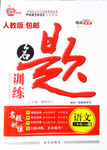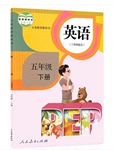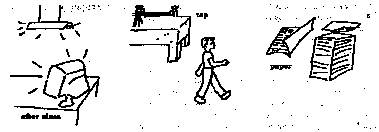
An energy watchdog is alarmed about the threat to the environment from the increasing electricity needs of gadgets(小装置)like MP3 players, mobile phones and flat screen TVs.
In a report today, the Paris-based International Energy Agency says new electronic gadgets will be three times their energy consumption by 2030 to 1,700 terawatt hours(千瓦时), which is equal to today's home electricity consumption of the United States and Japan combined.
The world would have to build around 200 new nuclear power plants just to power all the TVs, iPods, PCs and other home electronics expected to be plugged in by 2030,when the global electric bill to power them will rise to $200 billion a year, the agency said.
“Consumer electronics is the fastest growing area and the area with the least amount of policies in place to control energy efficiency, ” said Paul Waide, a senior policy analyst at the agency.
Electronic gadgets already account for about 15 percent of household electric consumption, a share that is rising rapidly as the number of these gadgets multiplies. Last year, the world spent $80 billion on electricity to power all these household electronics, the energy agency said.
“ Most of the increase in consumer electronics will be in developing countries, where economic growth is the fastest and ownership rates of gadgets are the lowest , ” Waide said.
“This will jeopardize efforts to increase energy security and reduce the amount of greenhouse gases blamed for global warming.” the agency said. Existing technologies’ could cut down gadgets’ energy consumption by more than 30 percent at no cost or by more than 50 percent at a small cost, the agency estimates, meaning total greenhouse gas emissions(排放) from households’ electronic gadgets could be held stable(稳定的) at around 500 million tons of CO2 per year.
55. How many terawatt hours did the energy consumption of new electronic gadgets reach?
A. Nearly l, 700. B. Nearly 600. C. About 200. D. About 60.
56. What is the condition in the area of consumer electronics?
A. There are a lot of rules to control the market.
B. There are few policies to control energy efficiency.
C. There are few choices for the customers.
D. There are lots of regulations to protect consumers' rights.
57. The underlined word “jeopardize” in the last paragraph probably means “ ”.
A. harm B. inspire C. strengthen D. encourage
58. We can know from the last paragraph that existing technologies ___________.
A. are able to control gadgets’ energy consumption
B. could do nothing about gadgets’ energy consumption
C. could only cut down gadgets’ energy consumption by 30 percent
D. cut down gadgets’ energy consumption at great cost
 开心快乐假期作业暑假作业西安出版社系列答案
开心快乐假期作业暑假作业西安出版社系列答案 名题训练系列答案
名题训练系列答案 期末集结号系列答案
期末集结号系列答案科目:高中英语 来源:陕西省西工大附中2010届高考下学期第六次模拟考试试卷(英语) 题型:阅读理解
You can be proud of yourselves, even if you can only make one or two of these green changes. The goal here is to limit carbon dioxide and other greenhouse gases, which are closely associated to the big problem of global-warming.
Strategy 1: Bring your own cup to Starbucks
You’ll get a 10 cent discount, and it’s one less paper cup to end up in a landfill. While you’re there, pick up some free bags of spent coffee grounds to use as ‘‘green’’ fertilizer in your garden.
The payoff: The store won’t create more waste when they throw away a cup.
Strategy2: Turn off your computer
When in standby mode, your PC is still using energy. In fact, 75percent of electricity used in your home comes from electronics that are turned off.
The payoff: Turning off a monitor for 40 hours a week may only save $5 a month, but it reduces CO2 by 750 pounds
Strategy 3: Reuse plastic bags
Instead of throwing away 100 billion plastic bags a year, try and get a second, third, or tenth use out of them. Better yet, next time you shop, try a reusable bag.
The payoff: You’re reducing pollution. The amount of oil it would take to make just 14 plastic bags would run your car for one mile.
Strategy4: Use recycled paper in the bathroom
Most of the toilet paper we use is made from trees found in forests previously untouched by humans.
The payoff: If every household replaced one roll of toilet paper with a recycled one, 424000 trees would still be standing. Look for eco-paper towels too.
Strategy5: Buy energy-efficient appliances(电器)
Replace the old fridge with an Energy Star appliance and you’ll use 15 percent less energy. It might be a little expensive to buy, but you’ll save money on your electricity bills and help the environment.
The payoff: If we all used one Energy Star appliance at home, it would be like planting 1. 7 million acres of new trees.
Strategy 6: Plant a tree
Adding green to your garden is beautiful and earth-pleasing.
The payoff: Just one tree will help make cleaner air and save the environment from 5000 pounds of hot carbon dioxide each year.
54. What is the best title for the passage?
A. Ways to save money at home
B. Ways to be earth-friendly
C. Ways to end global-warming
D. Ways to limit carbon dioxide
55. What benefits do these strategies have in common?
A. They all help reduce the use of energy like electricity.
B. They all cut down the amount of the paper.
C. They all result in producing less greenhouse gases.
D. They all help to preserve our trees and forest.
56.Which strategies suggest recycling or reuse of things?
A.Strategies 1&3 B.Strategies 2&5
C.Strategies 3&6 D.Strategies 4&5.
查看答案和解析>>
科目:高中英语 来源:河北省肃宁县第一中学2009-2010学年高二下学期期中考试英语试题 题型:阅读理解
Nervous suspects (嫌疑犯) locked up in Britain's newest police station may feel relieved by a pleasant yellow color on the door. If they are close to confessing(供认,坦白) a crime, the blue on the wall might tip the balance.
Gwent Police have abandoned colors such as grays and browns of the 20th-century police cell (牢房) and have used color psychology(心理学) to decorate them.
Ystrad Mynach station, which recently opened at a cost of £5 million, has four cells with glass doors for prisoners who suffer from claustrophobia(幽闭恐怖症). Designers have painted the frames yellow, which researchers say is a calming color. Other cells contain a royal blue line because psychologists believe that the color is likely to encourage truthfulness.
The station has  31 cells, including 12 with a “live scan” system for drunken or disturbed prisoners, which detects the rise and fall of their chest. An alarm alerts(报警
31 cells, including 12 with a “live scan” system for drunken or disturbed prisoners, which detects the rise and fall of their chest. An alarm alerts(报警 ) officers if a prisoner's breathing stops and carries on ringing until the door is ope
) officers if a prisoner's breathing stops and carries on ringing until the door is ope ned.
ned.
Designers and psychologists have worked for years on color. Blue is said to suggest trust, efficiency, duty, logic, coolness, thinking and calm. It also suggests coldness and un friendliness. It is thought that strong blues will stimulate clear thought and lighter, soft colors will calm the mind and aid concentration.
friendliness. It is thought that strong blues will stimulate clear thought and lighter, soft colors will calm the mind and aid concentration.
Yellow is linked with confidence, self-respect and friendliness. Get the color wrong and it could cause fear, depression and anxiety, but the right y ellow can lift spirits and self-respect.
ellow can lift spirits and self-respect.
Ingrid Collins, a psychologist who specializes in the effects of color, said that color was an “energy force”. She said: “Blue does enhance communication but I am not sure it would enhance truthful communication.”
Yellow, she said, affected the mind. Red, on the other hand, should never be considered because it could increase aggression(攻击性). Mrs. Collins praised the designers for using colors in the cells. Gwent is not the first British force to experiment with color to calm down or persuade prisoners to co-operate. In the 1990s Strathclyde Police used pink in cells based on research carried out by the US Navy.
49. The expression “tip the balance” in paragraph 1 probably indicates that the blue might _____.
A. let suspects keep their balance B. help suspects to confess their crimes
C. make suspects cold and unfriendly in law court D. enable suspects to change their attitudes to colors
50. Which of the following colors should NOT be used in cells according to the passage?
A. Pink. B. Yellow  C.
C.  Blue. D. Red.
Blue. D. Red.
51. Which of the following helps alert officers if someone stops breathing?
A. Scanning equipment. B. Royal blue lines. C. Glass doors. D. Yellow frames.
52. The passage is mainly concerned with _____.
A. the relationship between colors and psychology
B. a comparison of different functions of colors
C. the use of colors in cells to affect criminals’ psychology
D. scientific ways to help criminals reform themselves in prison
查看答案和解析>>
科目:高中英语 来源:东北三省三校2010届高三下学期第三次联合模拟考试英语试卷 题型:写作题

第二节 书面表达(满分30分)
目前,我国大力提倡构建节约型社会。下图是你在校园所见到的一些现象。假如你是学生会主席,请起草一份倡议书,描述这些现象,并向全校师生发出倡议,杜绝浪费,节约能源。
注意:
1.字数100字左右。
2.可根据需要补充与文章有关的信息。
3.开头已给出,不计入字数。
Dear teachers and students,
Our government is trying hard to build an energy – saving society.
______________________________________________________________________________________________________________________________________________________________
Student’s Union
查看答案和解析>>
科目:高中英语 来源:2013-2014学年湖南省长沙市高三10月第二次月考英语试卷(解析版) 题型:阅读理解
One of my China Dialogue colleagues in Beijing recently bought a Philips energy-saving light bulb to replace a standard one.He was happy with his choice.It may have cost 30 yuan (just under US$4.50) - ten times the price of a filament (灯丝) bulb - but he wanted to save energy as part of his low-carbon lifestyle.And according to the shopkeeper, he would save, in the long run, much more than the 30 yuan he was spending.
Yet only one month later, his expensive light bulb blew up, before he had saved even a small part of the purchase price.Will he stick to his high-cost, low-carbon lifestyle?
China's environmental organizations have started to advocate low-carbon lifestyles and the decrease of carbon footprints to help fight against climate change.But they have overlooked one fact: in China, low-carbon living comes at a high cost.It means buying energy-saving bulbs and appliances, and environmentally friendly building materials and daily goods.Cost can no longer be the only standard for purchases.An energy-saving and environmentally friendly product is more expensive than a standard alternative - whether it's a simple light bulb or the house it shines.For average consumers, even buying an ordinary bulb is a huge burden.How can we persuade ordinary people to choose an energy-saving residence? This is not a trend they can afford to follow; perhaps this fashion is only for the rich.
Most consumers today do not cause huge carbon dioxide (CO2) emissions.Their responsibility lies not in choosing a low-carbon lifestyle today, but in avoiding a high-carbon life in the future.The principle of "common but differentiated responsibility" - a basis of sustainable development - can be applied here as well.
In China, low-carbon living still is resisted by a lack of social infrastructure(基础设施). Even if your salary allows you to make that choice, nobody is there to help you accomplish it.
Consider energy-saving homes. You need to find out whether or not the developer has used natural materials wherever possible; how effective the insulation(绝缘物、隔热物) is; and what the green credentials of installed equipment are.You can read up a little, but you'll still be lucky to avoid being puzzled by the developers' marketing.Many so-called energy-saving buildings are nothing of the sort, and some are even more energy-hungry than the average home - as Li Taige warned in his article "Energy-efficient buildings? Not always", on China Dialogue last August.
1.What may probably be the best title of this passage?
A. To purchase a cheap bulb - your wise alternative.
B. To choose an energy-saving residence - a must of your life
C. To learn a low-carbon lifestyle - each citizen's responsibility
D. To learn a low-carbon lifestyle - a promising but difficult purpose
2.Why does the writer say this fashion is only for the rich in the fourth paragraph?
A. Because the cost is a very important standard for purchases.
B. Because buying an ordinary bulb is very expensive.
C. Because energy-saving products are more expensive than the common alternatives.
D. Because rich people like to follow this trend.
3.What does the writer think of energy-saving homes?
A. Most of them are environmentally friendly.
B. They are musts of low-carbon lifestyle of Chinese.
C. They are huge burdens for Chinese people.
D. Many of them are more in name than in reality.
4.We can infer from the passage that ____.
A. Using energy-saving bulbs and appliances is a fashion.
B. It's easy for most Chinese to try to learn a low-carbon lifestyle.
C. All citizens in China don’t have the same responsibility in living a low-carbon lifestyle.
D. Most Chinese families cannot afford to purchase an energy-saving residence.
5.What is the writer's attitude towards the low-carbon lifestyle?
A. informative and entertaining B. supportive but cautious
C. negative but wise D. positive and active
查看答案和解析>>
科目:高中英语 来源:四川省成都市七校协作体09-10学年度高一第二学期期中联考英语 题型:阅读理解
We need to make better use of our resources. In developing countries we have more than enough, if we are less wasteful in our ways. Fortunately, we can improve. The challenge lies not so much with ‘technical fixes’ but with our approach to our world around us. In the recent past we were in a “Wild West” economy, supposing that there would always be enough resources. Now we know there are no new Earth to explore and exploit; one image to illustrate this is to think of Earth as a spaceship, where most materials have to be recycled. For us, “moving on” will be a case of leaving behind the throwaway society and advancing to a conserver society.
To qualify as citizens of a conserver society, we must change traditional attitudes and thinking. We need to recognize that there is not very often such a thing as “waste”, rather, there are materials which sometimes end up in the wrong place. The change has already begun. The European steel industry reuses scrap(废弃的)metal, resulting in an energy saving of up to 50% . Recycling a glass container saves only 18%; but, in parts of the United States, a citizen buying a bottle of soda or beer now pays a deposit against return of the empty bottle.
If all drink containers in the USA were to be reused, the annual saving would be 0.5 million tons glass, plus about 50 million barrels of oil used in production processes. In Japan, OPEC promoted an increase in recycling of raw materials from 16% to 48% in just five years. In Norway, the price of a new car includes a disposal cost element of about 100 dollars, redeemable(可换成现款的)when the junked car is turned in at an approved receiving center.
Major new businesses are trying to exploit waste chemicals and oil. The Chinese claim to reuse 2.5 million tons of scrap iron and at least one million tons of waste paper each year. In the main, the conserver society depends on the commitment of individuals. But they can be encouraged by government incentive(鼓励) and punishment, which should apply at least as strongly to industry and other commercial interests.
73 Which of the following best expresses the meaning of “a conserver society” in the second paragraph?
A. A wasteful society.
B. A society which thinks of ways of recycling waste materials.
C. A society which keeps everything.
D. A society which saves electricity.
74 In the last paragraph, the author suggests governments _______.
A. depends on individuals to find ways of conserving energy.
B. find ways of encouraging those industries and individuals who conserve energy and of punishing those who don’t.
C. depend on companies to find ways of saving energy and rewarding workers
D. help establish businesses that will exploit waste materials
75 In this passage the author _______.
A. explains that meaning of the “Wild West” economy
B. tells us what recycled materials are.
C. teaches us how to recycle materials.
D. recommend a change in our use of resources strongly
查看答案和解析>>
湖北省互联网违法和不良信息举报平台 | 网上有害信息举报专区 | 电信诈骗举报专区 | 涉历史虚无主义有害信息举报专区 | 涉企侵权举报专区
违法和不良信息举报电话:027-86699610 举报邮箱:58377363@163.com